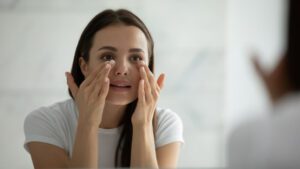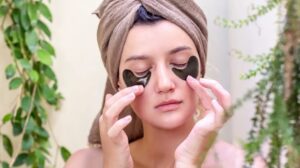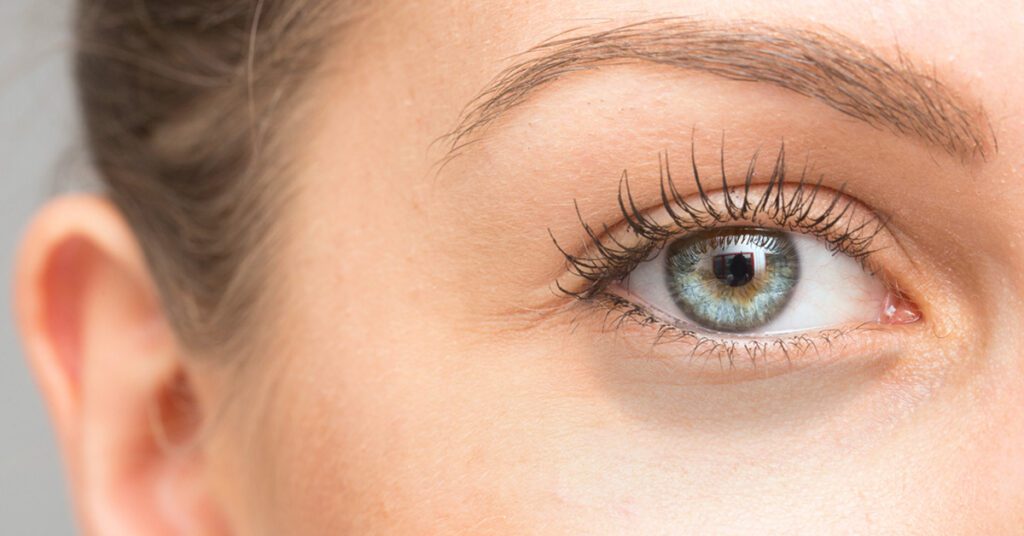dark eye circles, those unwelcome shadows beneath your eyes, can cast a gloomier appearance than a cloudy day. While often associated with fatigue, these under-eye companions can be attributed to a surprising range of factors. So, before you blame them solely on late nights, let’s delve deeper into the world of dark circles and explore their causes, solutions, and unique aspects.
Unveiling the Culprits: From Genetics to Allergies
The Sleep Factor:
The most commonly cited reason for dark circles is a lack of sleep. When sleep-deprived, blood vessels beneath the thin under-eye skin dilate, causing a bluish-purple hue. Aim for 7-8 hours of quality sleep to combat this telltale sign of exhaustion.
The Ageing Equation:
The under-eye skin loses collagen and elasticity as we age, making underlying blood vessels more visible. This contributes to a darker appearance, often accompanied by hollowness under the eyes.

The Genetic Legacy:
Unfortunately, dark circles can be inherited. If your family members sport them, you might too. Blame it on genes that influence skin pigmentation and blood vessel structure.
The Allergy Attack:
Allergies, by triggering inflammation and nasal congestion, can lead to dilated blood vessels around the eyes, resulting in it. Managing allergies with medication and avoiding triggers can help.
The Hyperpigmentation Hustle:
Melanin production can be uneven in people with darker skin tones, leading to hyperpigmentation under the eyes. This can be exacerbated by sun exposure and certain medical conditions.
Other Suspects:
Dehydration, sun damage, smoking, rubbing your eyes, and certain medications can also contribute to the appearance of dark circles.
Embracing the Solutions: From Home Remedies to Medical Interventions
Lifestyle Tweaks:
Prioritize enough sleep, stay hydrated, manage stress, and adopt a healthy diet rich in vitamins and antioxidants. These lifestyle changes can significantly improve the appearance of dark circles.
Cold Compress Comfort:
Apply a cold compress to constrict blood vessels and reduce puffiness, offering temporary relief.
Topical Treatments:
Eye creams containing caffeine, vitamin K, and retinol can help lighten it and improve skin texture. However, consult a dermatologist for personalized recommendations.
Medical Interventions:
For stubborn dark circles, procedures like fillers, lasers, and chemical peels can be considered under dermatological supervision.

Beyond the Shadow: Unique Aspects of Dark Circles
Skin Tone Matters:
The appearance of dark circles varies based on skin tone. In lighter skin tones, they appear bluish-purple, while in darker skin tones, they may manifest as brown or black shadows.
Cultural Perceptions:
Across cultures, the perception of circles differs. In some cultures, they are seen as a sign of beauty or wisdom, while in others, they are associated with fatigue or illness.
Individual Variations:
Even within the same family, the severity and cause of dark circles can vary significantly, highlighting the influence of individual factors.
By understanding the various causes and exploring different solutions, you can empower yourself to manage those under-eye shadows and embrace a brighter, more confident you
